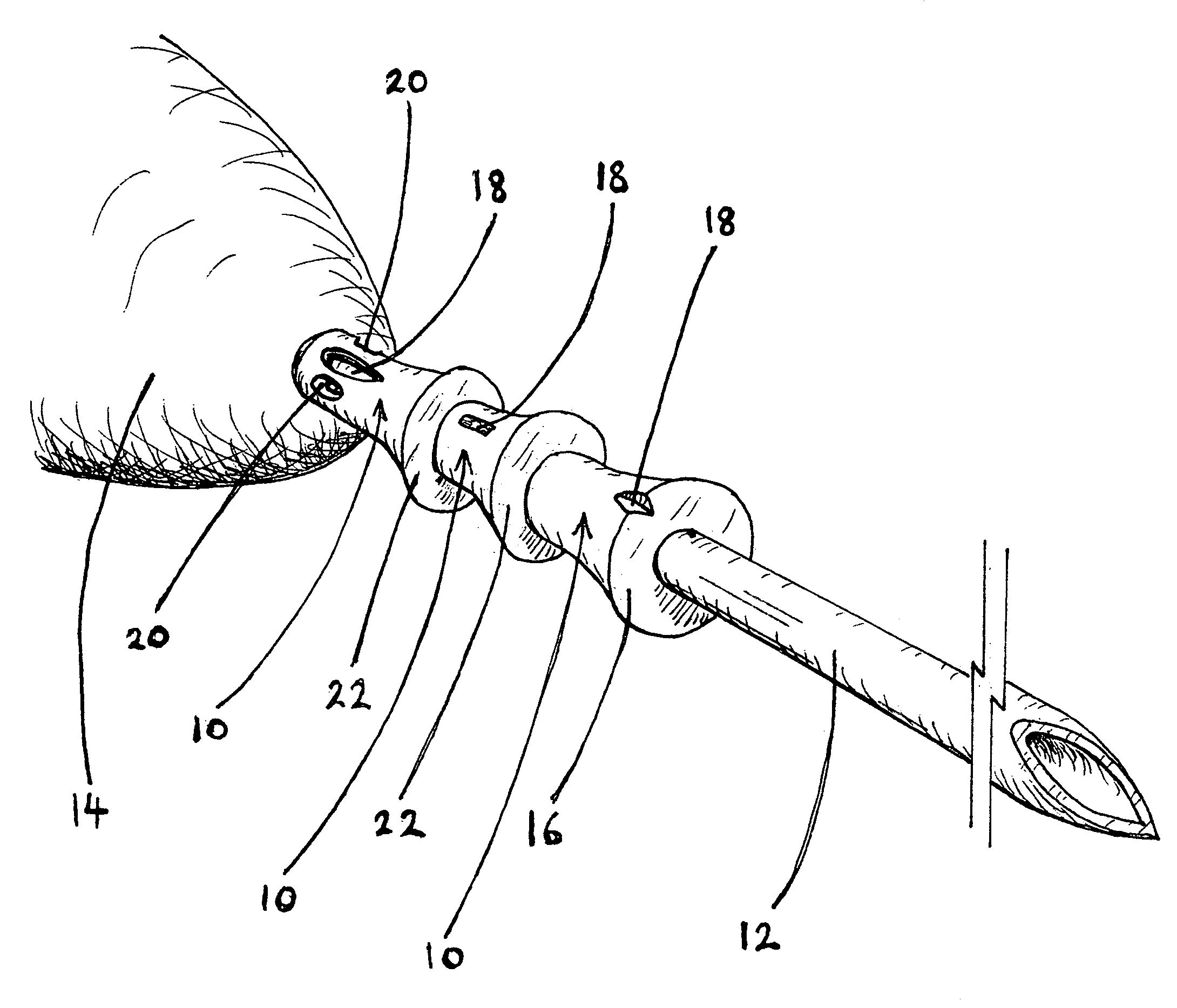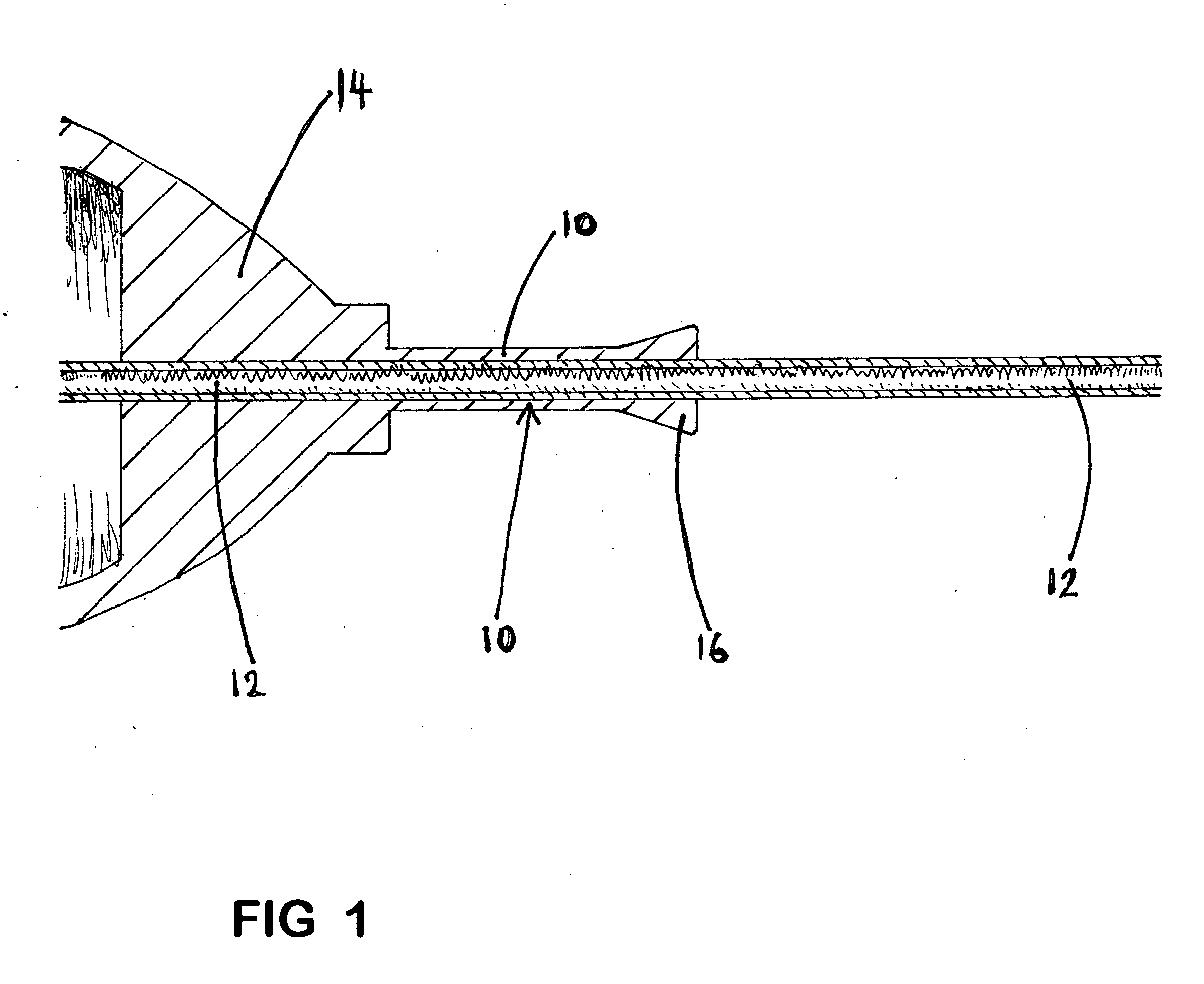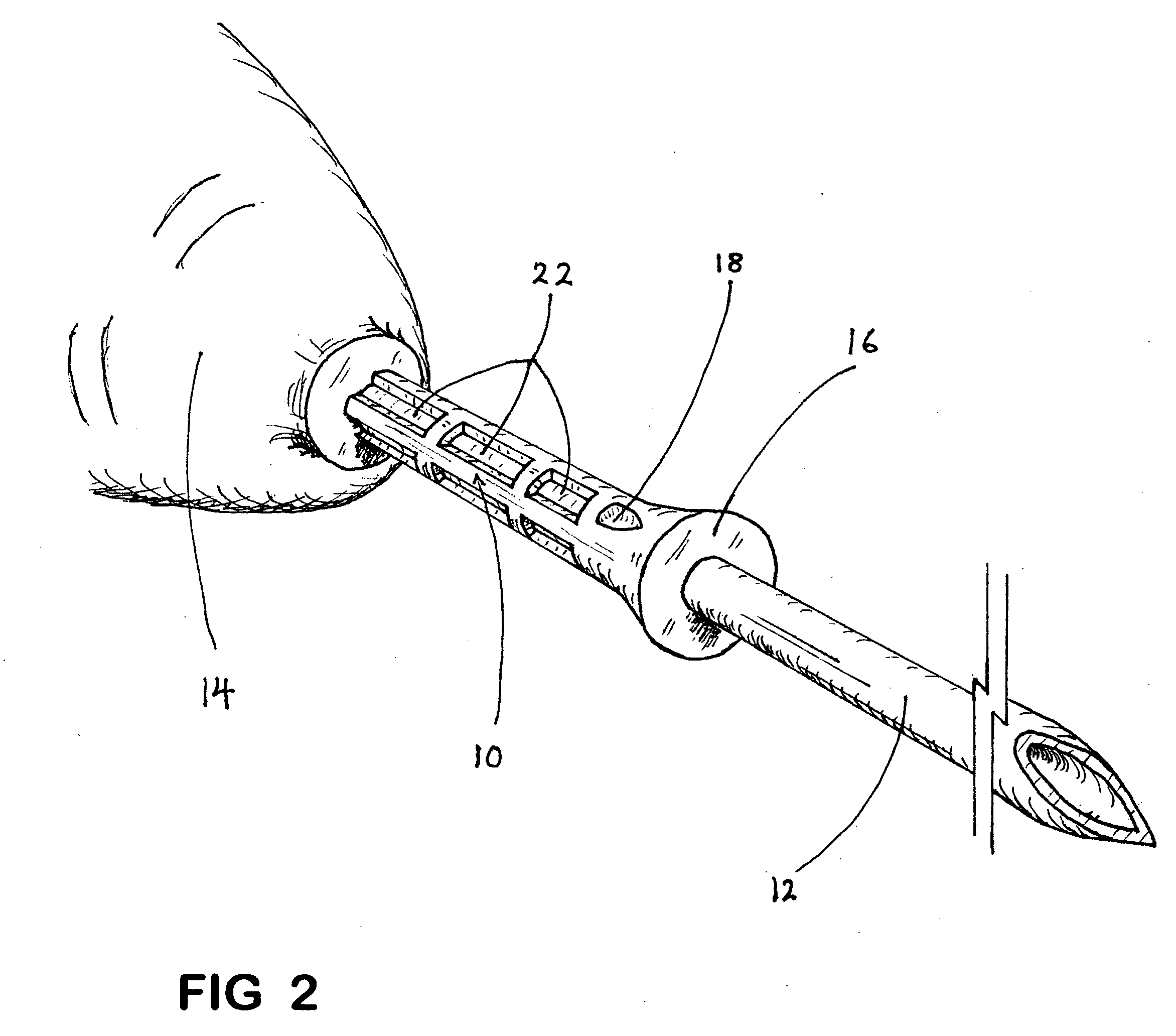Needle hub assembly
- Summary
- Abstract
- Description
- Claims
- Application Information
AI Technical Summary
Benefits of technology
Problems solved by technology
Method used
Image
Examples
example 2
[0056]User selects a standard needle hub assembly having no deflector 10. User selects a separate sleeve-shaped deflector 10 having a central lumen for receiving a needle. User inserts needle 12 into the lumen of deflector 10, and slides deflector 10 along needle 12 until it is in close proximity to hub 14, as shown in FIG. 4A. Deflector 10 is then connected to needle 12 by friction, but deflector 10 is not connected to hub 14. User applies lateral pressure against needle 12, and deflector 10 permits needle 12 to bend proximal to hub 14.
[0057]User forcefully inserts the full distal portion of needle 12 into the tissues until stop 16 portion of deflector 10 pushes against the tissues, thereby displacing the tissues away from the advancing hub 14 until the insertion of needle 12 is halted. Deflector 10 protrudes from the tissues, and the proximal portion of needle 12 and hub 14 are held away from the insertion point of the distal portion of needle 12 into the tissues.
[0058]By chance, ...
example 3
[0060]User connects a needle hub assembly having a deflector 10 which is not connected to hub 14, as shown in FIGS. 4B and 4C. User applies lateral pressure against needle 12, and deflector 10 permits needle 12 to bend proximal to hub 14.
[0061]User forcefully inserts the full distal portion of needle 12 into the tissues until deflector 10 pushes against the tissues, thereby displacing the tissues away from the advancing hub 14 until the insertion of needle 12 is halted. Deflector 10 protrudes from the tissues, and the proximal portion of needle 12 and hub 14 are held away from the insertion point of the distal portion of needle 12 into the tissues.
[0062]By chance, needle 12 separates from hub 14 proximally to hub 14. Deflector 10 remains connected to needle 12 distal from the point of separation.
[0063]When user withdraws hub 14 away from the tissues, hub 14 separates from deflector 10 and broken needle 12, but deflector 10 remains connected to needle 12. As the pressure exerted on t...
example 4
[0064]User connects a needle hub assembly having a connector 24 connected to hub 14, as shown in FIG. 5. For this example, connector 24 is brittle and inflexible. User applies pressure against needle 12 in an attempt to bend needle 12. The pressure fractures brittle connector 24, so that deflector 10 becomes disconnected from hub 14, but remains connected to needle 12. The pressure bends needle 12 proximal to hub 14.
[0065]User forcefully inserts the full distal portion of needle 12 into the tissues until stop 16 portion of deflector 10 pushes against the tissues, thereby displacing the tissues away from the advancing hub 14 until the insertion of needle 12 is halted. Deflector 10 protrudes from the tissues, and the proximal portion of needle 12 and hub 14 are held away from the insertion point of the distal portion of needle 12 into the tissues.
[0066]By chance, needle 12 separates from hub 14 proximally to hub 14. Deflector 10 remains connected to needle 12 distal from the point of ...
PUM
 Login to View More
Login to View More Abstract
Description
Claims
Application Information
 Login to View More
Login to View More - R&D
- Intellectual Property
- Life Sciences
- Materials
- Tech Scout
- Unparalleled Data Quality
- Higher Quality Content
- 60% Fewer Hallucinations
Browse by: Latest US Patents, China's latest patents, Technical Efficacy Thesaurus, Application Domain, Technology Topic, Popular Technical Reports.
© 2025 PatSnap. All rights reserved.Legal|Privacy policy|Modern Slavery Act Transparency Statement|Sitemap|About US| Contact US: help@patsnap.com



